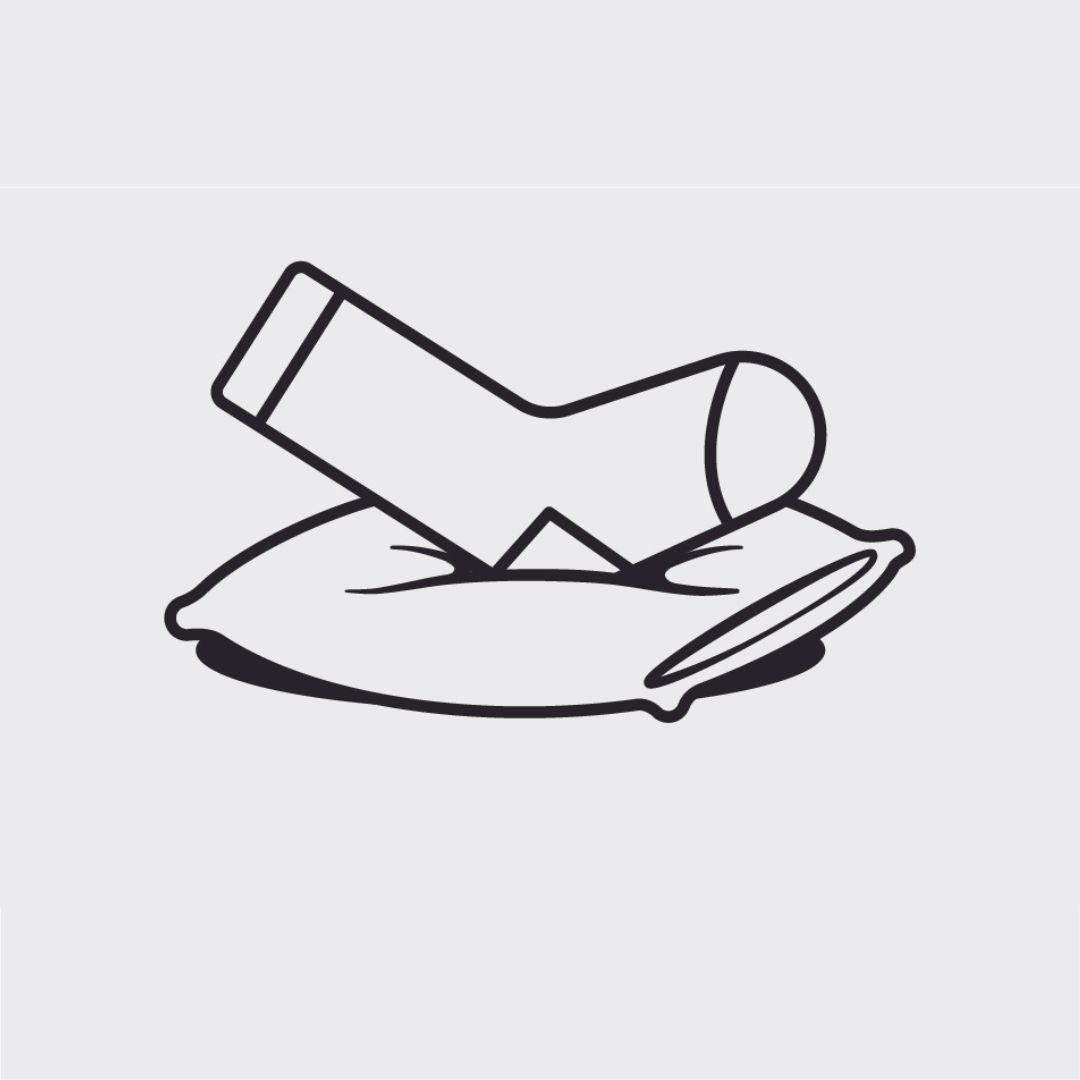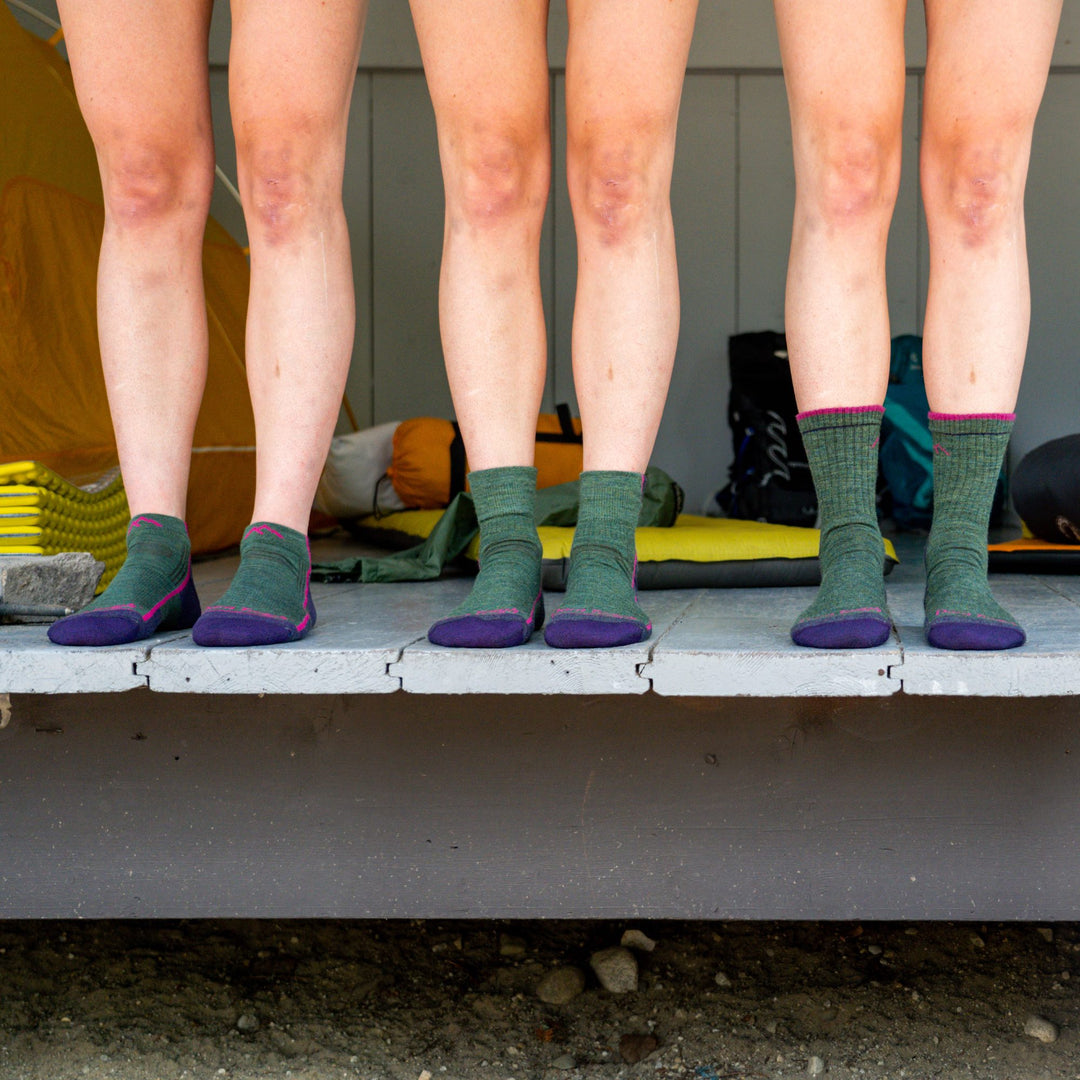Merino Wool vs Regular Wool: Not All Wool’s Created Equal

Every sock (except our select synthetic styles) created by Darn Tough contains only three ingredients: Merino Wool, Nylon, and Lycra® Spandex. Sounds simple right? Well, it is, and it isn’t.
Simple in the fact that we keep things straight forward with what works and what doesn’t. Slightly more complicated is why we use Merino Wool vs. regular wool in all our socks.

We choose Merino Wool because it’s wildly resilient and incredibly versatile. Two great things for hiking socks, snowboard socks, skiing socks, running socks, and every sock in between. You might be wondering why Merino Wool is so perfect as a sock material, so today we’re covering what is it and how it’s different from regular wool.
What Even Is Wool?
You can also get wool from lots of different mammals: sheep, goats, rabbits—even camels. But today we’re focused on sheep’s wool.
Wool is a fiber gathered from sheep. Like our hair, wool grows in individual follicles that is then shorn off into fleeces. The process is like how we humans get haircuts, in that it doesn’t harm the sheep, just leaves them a bit lighter.
But it’s also a great natural material that’s been used for centuries around the world and one that can be produced ethically and sustainably by following standards like the Responsible Wool Standard.

Well, one of the biggest differences between wool and human hair is the diameter of the hair follicle (measured in microns). The micron count for wool, like the wool used to make clothing, is usually less than 40, but even lower — like 25 — for much softer types of wool.
If you’re wondering, the micron count for human hair is between 40 and 90, so the chances of you getting a human hair wool sweater or socks is slim. And as a rule, the smaller the micron, the softer the feel. The average Merino Wool is about 21-22 microns. So… pretty soft.
What Is "Regular Wool" (aka Not Merino)?
Regular wool is any wool that comes off a sheep that isn’t specific to the breed or age of the sheep. That’s a broad definition, but it’s likely safe to say those itchy wool sweaters your grandma gave you would fall into this “regular wool” category.
All sheep wool is warm — it continues to insulate even when wet — and moisture wicking. Wool can absorb almost a third of its weight in water without becoming damp to the touch. And with its high temperature tolerance, wool is also flame resistant. Pretty cool. That’s why you’ll find wool used in clothing for firefighters and in military uniforms.

Wool is also a renewable material because it just grows and can be shaved off again and again. Compare that to synthetic fabrics, which are typically made using petroleum products.
But unless called out specifically, most wool clothing you come across is not Merino Wool. Regular wool still a great natural insulator, just not as great as Merino Wool. One of the more common, softer, wool’s you’ll come across is lambswool.
What Is Lambswool?
Lambswool is wool that is 2 inches or shorter from the first shearing of a sheep, usually when the sheep is around 7 months old. This soft, elastic, and slippery wool is primarily used in high-end textiles.
Unlike standard sheep’s wool, lambswool is softer and less likely to cause itchy skin. It too is moisture-wicking, breathable, and soft — making it popular in knitwear and woolen garments.
What Is Merino Wool?

Merino Wool is the world’s most versatile performance fabric. But Merino isn’t a brand of wool, it’s the name of the breed of sheep where the wool comes from. All Merino Wool comes from Merino sheep, and Merino sheep only.
First established in Spain in the Middle Ages, Merino sheep and their wool were so valuable that anyone who tried to export the breed faced the death penalty. Pretty extreme if you ask us. (We have much looser restrictions in the Darn Tough factory.)
After some brave souls were able to export the sheep, now Merino sheep can be found in high-elevation areas in New Zealand and Australia, where Merino sheep run wild.
The Benefits of Merino Wool

Prized for its durability and moisture-wicking properties, one of Merino Wool’s most important functions is its ability to stretch. Its elastic-like core gives the wool a reflexive memory, so it snaps back after tough use — like hiking, running, skiing, and more.
Two key differences between Merino Wool and regular wool are its staple length and micron count. This combination makes Merino Wool garments the more durable, non-bulky, non-itchy alternative to other wool products.
Staple length refers to how long each individual fiber is. Merino Wool has a longer staple length than other wools. When you spin these fibers into yarn, this increased staple length allows the yarn to be more consistent, creating a softer, smoother feel.
You can spin Merino Wool into an incredibly thin yarn – you might mistake it for a thread, it’s that thin – yet it’s also incredibly strong. The long staple length creates more durability in the spinning process because the individual fibers overlap for greater distances, creating a more durable yarn.
The Merino fibers’ natural resiliency and long staple length mean you can make thinner, strong yarns with Merino than with other wools. Of course, final results also depend on how you spin the yarn, which is why we use world-class spinneries.
That brings us to Merino Wool’s fine micron count. As a rule, finer (aka thinner) fibers feel softer. Merino Wool fibers have the lowest micron count of any sheep’s wool. Because the fibers are so fine, they bend when they contact your skin, meaning they don’t cause that prickly, itchy feeling. More often than not, it’s not a wool allergy causing your wool garment to itch; it’s the kind of wool you’re wearing.

Under a microscope, Merino Wool’s fibers measure half as thick as a human hair but are twice as resilient and able to be twisted up to 20,000 times without breaking. This resilience is what makes it the leading choice in the outdoor industry to create long lasting, durable products.
Combine Merino’s fine fibers with the long staple length, and you get durable, soft, non-itchy garments. You might be surprised how thin and soft a material you can knit with superfine Merino Wool yarns.
Other benefits of Merino Wool are that it’s naturally odor-resistant and thermoregulating. That lets us use Merino Wool in everything from cold-weather snowboard socks to hot-weather running socks. All with the same fabric.

Merino Wool vs Lambswool vs Regular Wool
All sheep wool is super warm, but regular wool can come from any sheep, while lambswool comes from young sheep of any breed — and there are over 1,000 sheep breeds. Merino Wool only comes from Merino sheep of any age.
Lambswool garments generally come with a label that indicates the micron count, but that doesn’t really tell you enough about the wool to know how soft it is or what kind of sheep that wool came from. Now you can have lambswool from Merino sheep – this Merino lambswool is even softer than Merino Wool, but it’s also more expensive.
At Darn Tough, we use Merino Wool for our socks because of how it offers the best of both worlds — durability and softness.
So Why Do We Use Merino Wool?
We could choose to make our socks out of lots of different wools, fibers, or even — heaven forbid — cotton. But Merino Wool is our top sock material pick because our mission is to make the world's best socks and back them with a lifetime guarantee, and Merino Wool helps us accomplish this.
Merino Wool’s durability, versatility, and performance properties all work to help us back up our unconditional lifetime guarantee: if you can wear out our socks, we will replace them free of charge. So, cheers to Merino sheep. This “baahhh”s for you.








